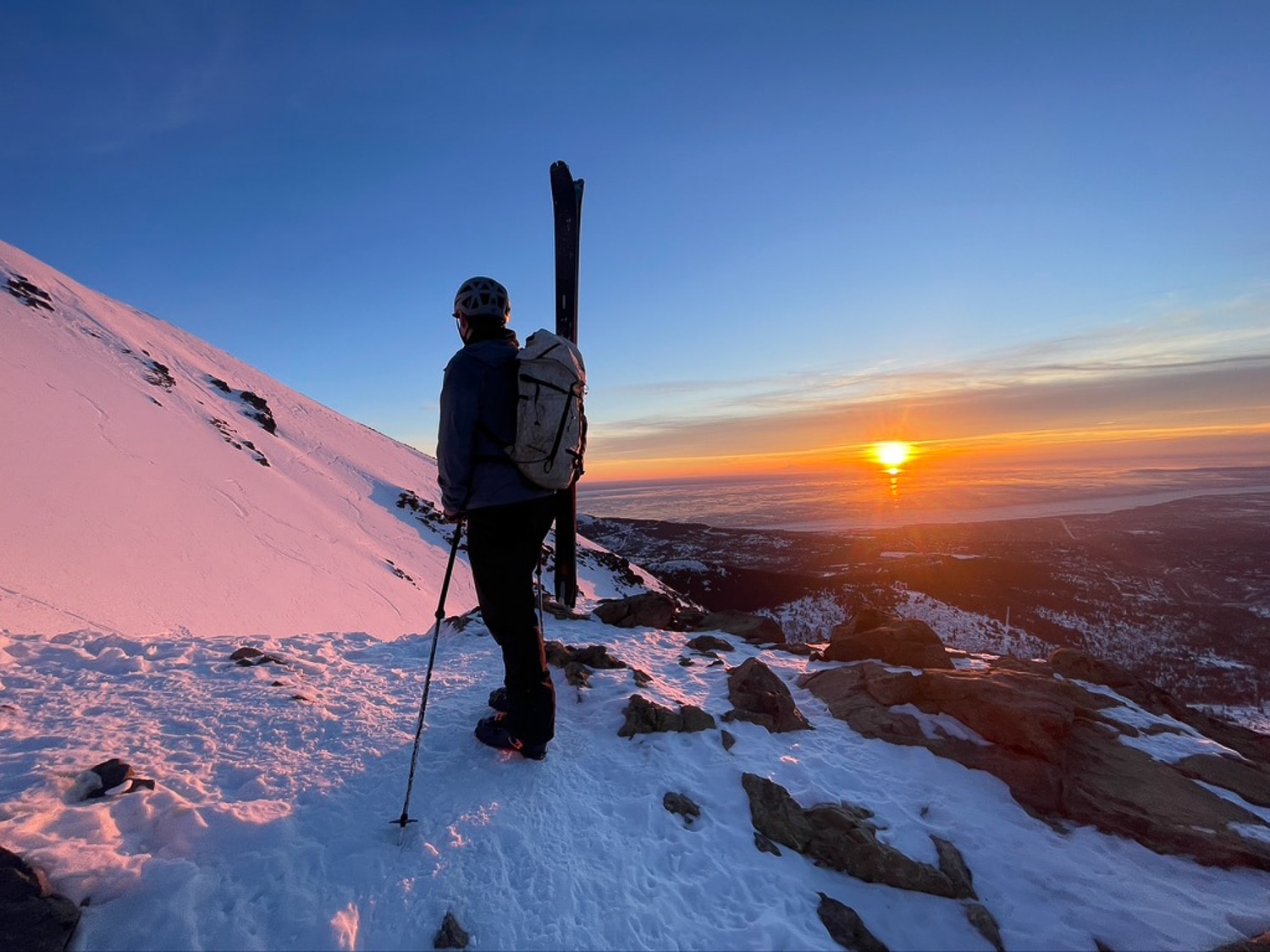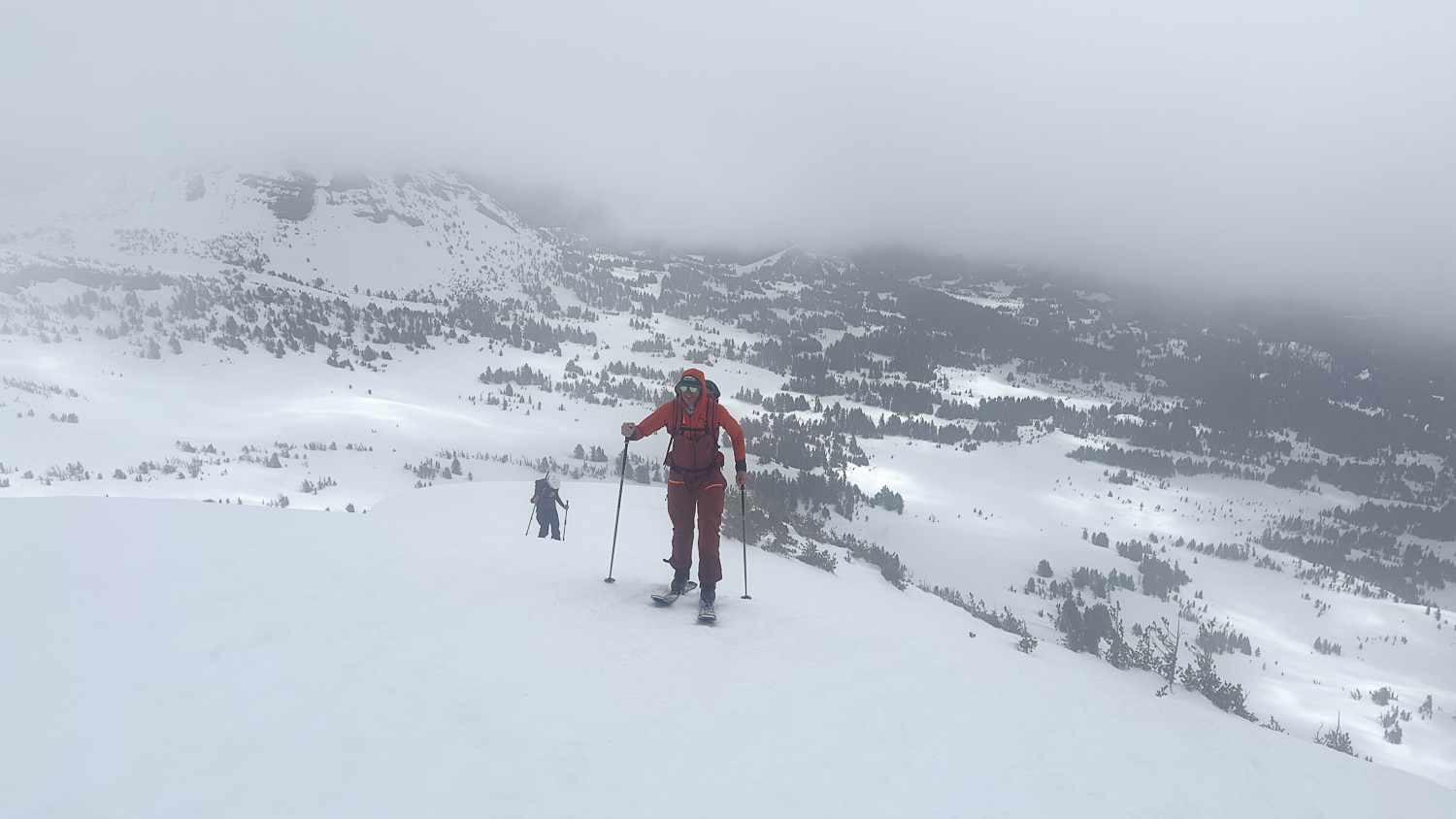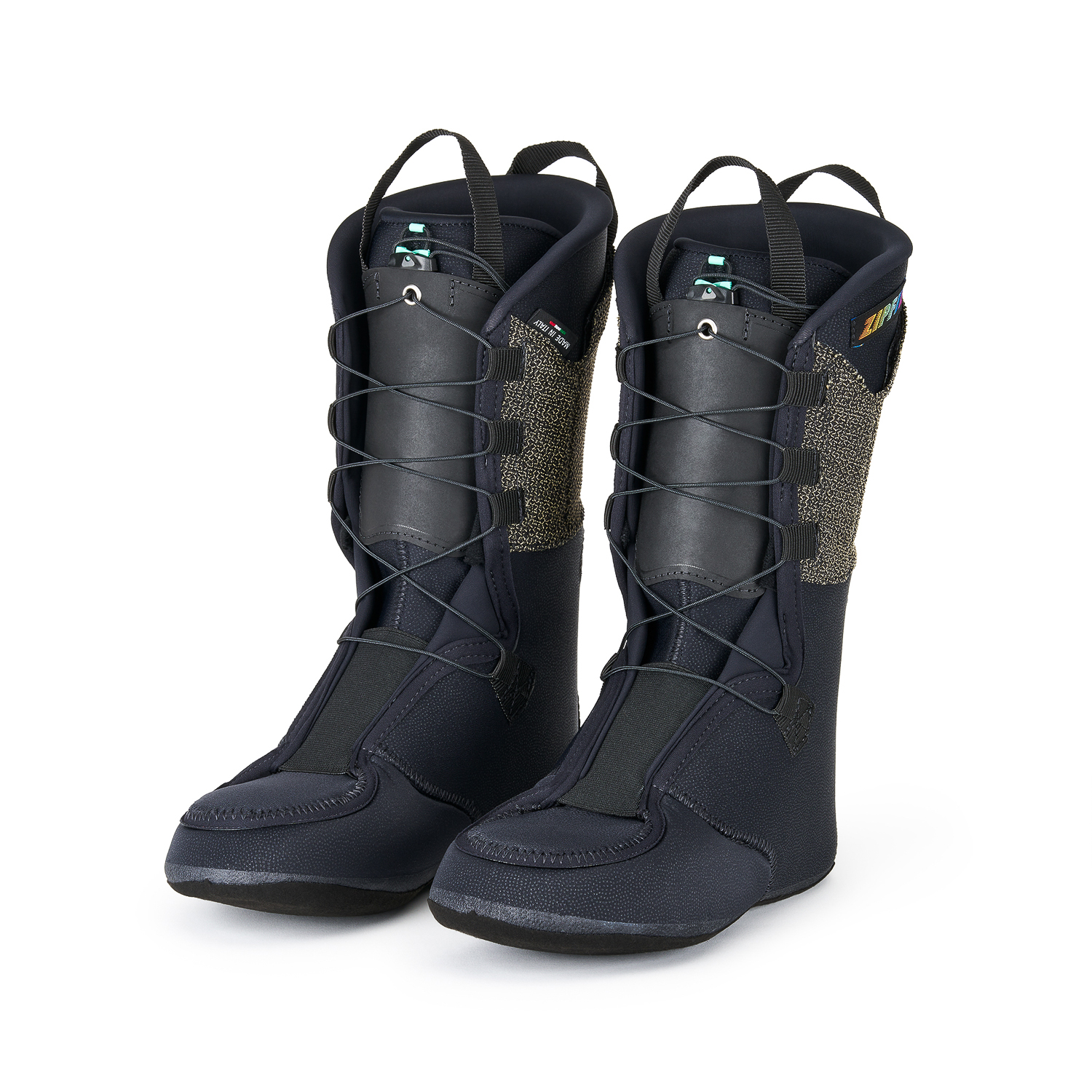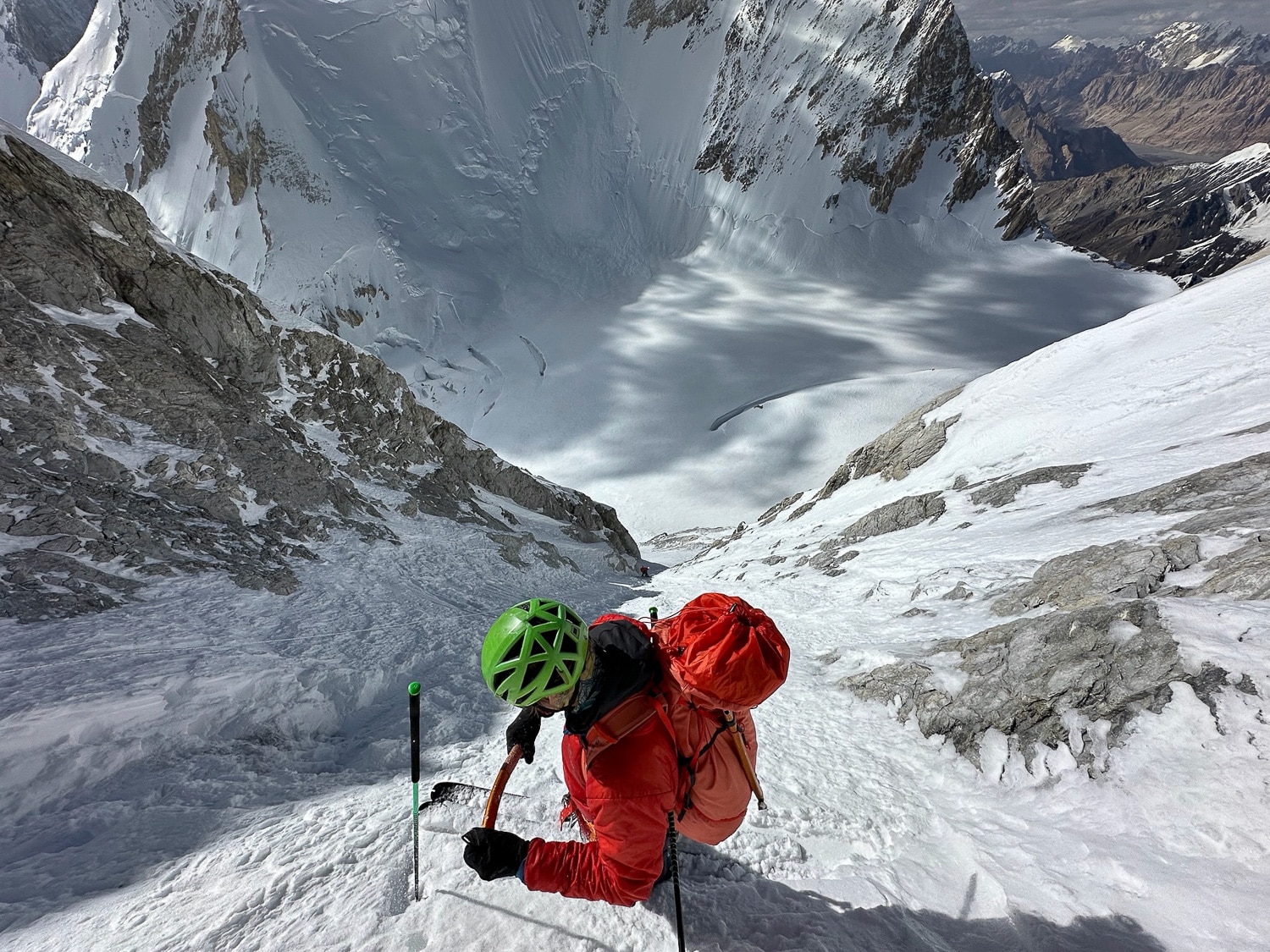Sometimes, part of the ski decent requires a rappel here and there. Sam Hennessey has some rappelling pointers for aspiring ski mountaineers.
With the confidence of a priest proclaiming the word of god, a prominent member of the AMGA once told me that ski mountaineering starts when you have to use a rope. I’d argue that using the rope to descend seriously detracts from any ski descent, mountaineering or not. Still, there’s no denying that being handy with the cord can be a pretty useful skill in the mountains: It can get you out of a jam and open up options for lines that simply won’t go without it. Rather than being some hallmark of a “mountaineer,” I’d argue that being a competent rope rider is another skill to learn—a tool you’d rather not use but are sure glad to have when you need it. As skiers specifically, some different considerations regarding rappelling are worth discussing.
First, what equipment do you need? A rope is obviously the first place to start, and there are dozens of different options these days, from beefy single-rated cables to skinny, high-tech shoelaces. For skiing, weight tends to be a big deal. After all, isn’t having fun on the way down the whole point?
For that reason, I tend to lean towards the lighter side—and shorter as well, assuming you don’t have to rappel that far. 30m of rope feels a lot better in the backpack than 60m, regardless of the diameter. One consideration when using skinny ropes is the size of your rappel device – standard devices often don’t work particularly well with the slick, skinny cords, especially on steep rappels. My solution is to use a Petzl Reverso (rated to 7.3 mm but seemingly fine down to 6mm) and add friction when needed by clipping an extra carabiner through.
To round out the kit, you’ll want a harness (minimalist, with the ability to put it on with your skis on the ground, which is crucial), a 120 cm sling, and a couple of lightweight locking carabiners.
Imagine the typical rappel scenario: You link turns down a steep face and cautiously approach a cliff. You spy the anchor to your right and traverse over. Is this an ideal place to put on your harness, dig around in your backpack, and look for your gear? Probably not. One of the best lessons you can learn about traveling in complex terrain is to think two steps ahead at all times. At a minimum, when descending into technical or unknown terrain, I like to have my harness on and have a sling girth hitched to the belay loop, ready to go as a tether.
Arriving at the Anchor
Upon reaching the anchor, I can clip in, inspect it to make sure it is solid (important!), and deal with the rest of the rappel system while securely attached to the mountain. Once you are secure, there are a few things you need to sort out. First, do you need to take off your skis? Often, on short cliffs or sections of unskiable snow, you can leave your skis on your feet and slide through facing backward. For more sustained steep terrain or multiple rappels in a row, you should remove your skis (carefully) and attach them to your pack. If rappelling over sustained icy terrain, I typically put on crampons.






Leave a Reply
You must be logged in to post a comment.